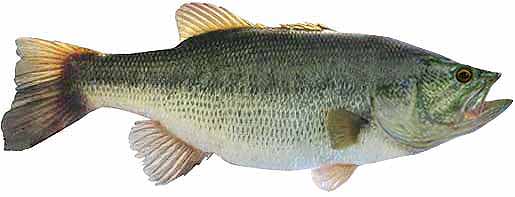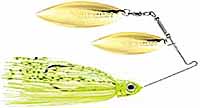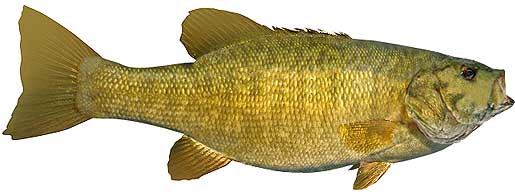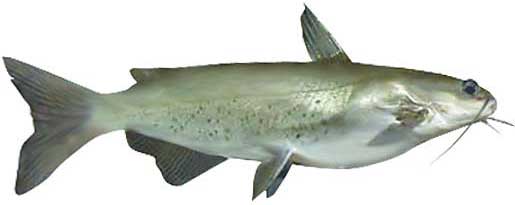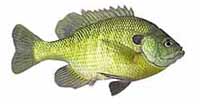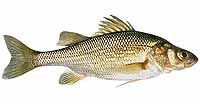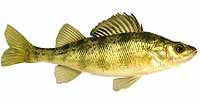Fishing Report For Lake Nockamixon, PA
By Rick Seaman
Last updated on .
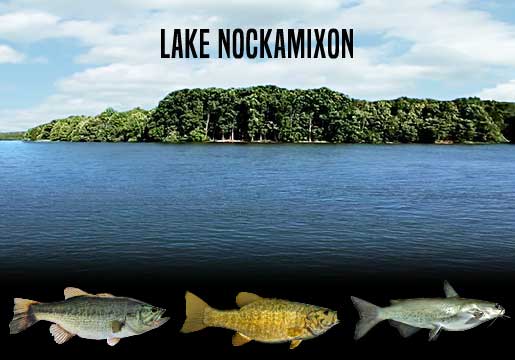
Fishing Reports
Popular Fish Species Lake Nockamixon, PA
Largemouth Bass
Current Report: Good
FALL. Now that late Fall taking over, bass are moving out of shallow coves and shallow bays, following schools of baitfish back into 15 to 30 feet of water. Currently jerkbaits, artificial worms, spoons and jigs are catching most of the bass. Bass are moving out to ledges, channel edges, points and humps where flutter spoons, jigs and drop shots are often good choices in 12 to 20 feet of water.
WINTER. Winter will isolate largemouth around slightly deeper structure, flats, points and creek channels. They can be found from 20 to 60 feet deep, around main-lake channel edges, rock piles, stump fields and brush piles. Here they hold, feeding less frequently, awaiting warmer water to return in Spring. Slow presentations are key to getting bites. On warmer days, especially during late afternoons, bass may move shallower to feed.
SPRING. Once water temperatures rise into the low 60's, largemouth will move from deep wintering holes, to shallower water nearby spawning areas. The upper end of the lake warms the quickest, and bass become active when that happens. As the water warms on the lower section of the lake, toward the dam, crankbaits and vibrating jigs are reported to catch early Spring bass. Anglers report good topwater action from mid Spring through Summer, especially early in the morning, and on cloudy days. Good areas to explore include shallow flats around the Tohickon inlet and numerous protected coves, like Swan Cove. Vibrating jigs, jerkbaits and spinnerbaits typically get bites just away from the shoreline. At this time they are feeding aggressively in about 2 to 10 feet of water, and preparing for the spawn. Once water warms into the mid to high 60's, they will move into 2 to 6 feet of water, and create nests, then lay their eggs. Immediately afterwards, females move to deeper water and males remain to guard the eggs, and then the fry. After a couple weeks, the males also move to slightly deeper water, around 8 to 25 feet deep. Deep-diving crankbaits, vibrating jigs, plastic worms, jigs, worms, and swimbaits catch bass during this period.
SUMMER. Each Summer, water temperatures warm considerably, for several years now, vegetation grows along many of the shallow banks. This creates an ideal hiding place for gizzard shad and alewives, and the bass come here to find them. A frog is a great way to fish this thick vegetation and catches a lot of bass here. Other bass move out into deeper water and feed on points, humps and flats, near drop offs. Bass will feed shallow, early and late in the day, where they will be caught in 2 to 12 feet of water, on topwater lures, square-bill crankbaits, spinnerbaits and a variety of other lures. Wacky-rigged stick worms always catch finicky bass when the bite is slow. Largemouth bass here feed on shad, herring, small sunfish and crawfish. During the hotter parts of the day, they are being caught on points, channel edges, and ledges 12 to 40 feet deep. Some of the best reports seem to be from anglers fishing around points in the basin around the marina.
Smallmouth Bass
Current Report: Good
Like the largemouth here, smallies are found throughout the lake, but are more likely to favor rocky areas where they can feed on crawfish.
FALL. Late Fall is in full swing and smallmouth have followed schools of baitfish into deeper water. They thrive in the cold, clean water, which is an ideal environment for them. Locals report that tube jigs, and drop shot rigs with small worms or shad shaped plastics, are popular in 10' water or deeper. Worms, jigs, deep-diving crankbaits, swimbaits, and slow-rolled spinnerbaits, are also successful, when bass are shallow to mid depth. Smallies are being caught around 20 to 30 feet deep. Fishing shallow for smallmouth is often good on cold, windy, cloudy and rainy days.
WINTER. Winter will isolate them around deeper structure, points, flats and creek channels, often suspending in open water above these features. Before, during and after ice fishing season, they can generally be found from 20 to 45 feet deep. Jigging spoons, tube baits, drop-shot worms, jigs and Ned rigs tend to temp smallmouth in deep water. I like to work these deeper haunts very slowly, as the bass are somewhat sluggish. Here they hold, feeding less frequently, awaiting warmer water to return in Spring.
SPRING. After ice out, when water temperatures rise into the 50's, smallmouth move from deep wintering spots to shallower water, just outside spawning areas. They feed heavily in 5 to 15 feet of water at this time, and are typically caught on jerkbaits, crankbaits, tube baits, Ned rigs, and crayfish imitating plastics. Good areas to explore include the shallow rock ledges and points around the Tohickon inlet. Once water warms into the high 50's, they move into shallower water, and create nests in gravel or sand areas, then lay their eggs. Females then move to deeper water and males remain to guard the eggs, and then the fry. After a couple weeks, the males also move into 10 to 25 feet deep, and feed aggressively. Crankbaits, tube baits, Ned rigs, plastic worms, spoons and swimbaits are catching smallies during this period.
SUMMER. Smallmouth bass are currently feeding shallow early and late in the day in 3 to 12 feet of water. They are being caught on topwater, crankbaits, swimbaits, Ned rigs and tube baits. Smallmouth bass here feed on crawfish, gizzard shad, and small sunfish. They prefer rocky or gravel bottom areas, as this is where crayfish live. During the hotter parts of the day, they are being caught on points, humps, and ledges around 12 to 40 feet deep. Often these deeper fish tend to school, so finding them can deliver some fast action. Anglers fishing rocky points and ledges, are reporting good catches.
Channel Catfish
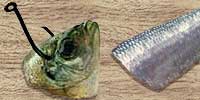

Current Report: Good
Lake Nockamixon is reported to have an over abundance of channel catfish. Plenty of cats around 3 to 5 pounds are caught easily, with many regularity caught around the 10-pound range.
FALL. Fall is one of the better times of year for catching channel catfish. Early in Fall they cruise the 8 to 20 feet deep shallows, in search of food. Later, in the season they migrate away from the shallows and current, to moderately deep flats and channel edges on the main body of the lake. They can typically be found from 6 to 25 feet deep. Fishing for channel catfish is often productive around any kind of structure. Road beds, transitional points, creek channels, inlet mouths, and structure along the main channel, are all good places to begin. Drift fishing or slow-trolling baits along mid-depth structure is popular and generally productive. Use a slip sinker or Carolina rig setup. Use cut bait, nightcrawlers, shrimp or prepared baits. They remain in these areas and feed aggressively in preparation for Winter.
WINTER. In Winter, the channel cats gather in deep holes and go virtually dormant, especially if water cools into the 40's. They hole up in pockets, deeper channels, ledges, and the basin areas from 20 to 60 feet deep and await warmer water. Slow presentations, especially cut bait, can still entice strikes. Often during mid day, through the afternoon, anglers are catching them a bit shallower on the same structure.
SPRING. In Spring, when water temperatures rise into the high 40's, channel catfish start their migration into coves and up river. Early in the season, look for them in 6 to 35 feet of water. They hold here, and feed aggressively, around relatively shallow cover until water warms into the mid 70's, at which time they begin the spawn process. Anglers are using slip sinkers, 3-way rigs, or Carolina rigs to get, and keep, the bait close to the bottom. Later in Spring, focus on shallower flats into late evening.
SUMMER. In Summer, slow-moving water, at the river end of the lake may draw catfish to feed. Otherwise they are scattering, locating cover in slightly cooler water. Reports indicate the most successful anglers are using nightcrawlers, cut bait, minnows or shrimp. Most channel cats hold in 12 to 40 feet during the day, and 2 to 15 feet during the night. Fishing from late in the day until midnight produces some of the best results, as this is their prime feeding time.
Fishing Video
Fish species to fish for...
Guide to fishing for largemouth bass, smallmouth bass, channel catfish, white catfish, black crappie, white crappie, walleye, bluegill, pumpkinseed sunfish, white perch, yellow perch, hybrid striped bass, chain pickerel and tiger muskie at Lake Nockamixon in Pennsylvania.
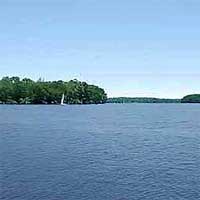 Lake Nockamixon is a 1,450-acre impoundment with about 24 miles of shoreline. It offers a nice variety of fish species. Bass, catfish, perch, crappie, walleye, chain pickerel, sunfish and muskie all thrive here. The lake had a 20-hp limit for boat motors. Shoreline fishing is available, and ice fishing is allowed when the ice is safe.
Lake Nockamixon is a 1,450-acre impoundment with about 24 miles of shoreline. It offers a nice variety of fish species. Bass, catfish, perch, crappie, walleye, chain pickerel, sunfish and muskie all thrive here. The lake had a 20-hp limit for boat motors. Shoreline fishing is available, and ice fishing is allowed when the ice is safe.
Primary fish species to catch
Click images for fishing tips and details about each species.
Today's Weather & Forecast
Fishing Boat Rentals
Click here for fishing boat rentals.
Marinas
Click here for marinas.
Public Boat Launch Ramps & Landings
Click here for boat ramps.
Fishing License
Click here for a Pennsylvania Fishing License.
Map - Fishing & Access
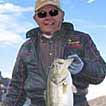 Rick Seaman is a fishing enthusiast with over five decades of fishing experience, a retired tournament fisherman, author of numerous published articles on fishing, and co-author of the book "Bass Fishing - It's not WHAT you throw, It's WHERE you throw it".
Rick Seaman is a fishing enthusiast with over five decades of fishing experience, a retired tournament fisherman, author of numerous published articles on fishing, and co-author of the book "Bass Fishing - It's not WHAT you throw, It's WHERE you throw it".
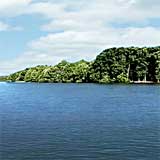 Contact Information
Contact Information
Nockamixon State Park
1542 Mountain View Dr
Quakertown, PA 18995
215 529-7300
Fishing lakes in each state
112325
Lake Nockamixon, PA Report
PENNSYLVANIA


Bass, crappie, perch and catfish fishing in southeast PA.


